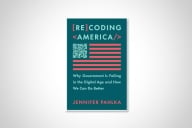You have /5 articles left.
Sign up for a free account or log in.
Among the torrent of end-of-year and end-of-decade lists over the last few days, you may have missed Audrey Watters’s list of the “100 Worst Ed-Tech Debacles of the Decade.” It’s worth checking out in its entirety.
To be fair, Watters addresses the ed tech that actually existed, rather than the possibilities opened up by the underlying technology. In many cases, the critique was more of the underlying economic motive than of the tech itself.
For example, take No. 88, “bundling textbooks with tuition.” Watters refers to some early attempts by colleges to charge students a flat textbook fee, and then to provide them with textbooks directly (usually, though not necessarily, in electronic form). She doesn’t cover more recent versions, such as Cengage Unlimited, but the concept is similar. In theory, students could be quoted a single figure that would cover both tuition and books.
Like many bad ideas, it has a certain surface appeal. From a student or parent perspective, it reduces surprises; you know what you owe. That helps with planning. From an academic perspective, it greatly increases the chances that every student will have books on the first day of class. (People who haven’t taught are often surprised at how many students don’t have the books at the start of the semester. Causes range from financial aid bottlenecks to seeing if they’ll actually need the book to just not having the money. Whatever the cause, though, it makes it harder for faculty to be effective.) From a publisher -- and campus bookstore -- perspective, it guarantees a certain volume of sales: whatever enrollment is, that’s what you sell. They’re still subject to drops in overall enrollment, but they’re no longer forced to compete with online sellers, used books and the like.
Which is exactly the problem.
This spring, for instance, The Boy has arranged with a friend for a private sale of the biology textbook the friend used last semester. By cutting out the middleman, both seller and buyer are getting a better deal. But the bookstore isn’t getting anything from the resale, and neither is the publisher. I’m OK with that -- there’s no law against private sales of books, and I’ve been known to buy plenty of used books myself -- but I can see where the publisher would rather find a way to stop it. If the book fee were a mandatory appendage to tuition, there would be nothing to gain by picking up a used book.
As the chief academic officer of my college, I have other objections to the subscription model. If it’s publisher-agnostic -- in other words, if you allow faculty to use whatever books they want, and just average out the cost, you stifle the used book market without materially reducing the cost of new ones. If you cut a special deal with a given publisher, you may get a discounted rate up front, but you’re at the mercy of that publisher. That effectively restricts faculty options and puts the publisher in a position to jack up the rates over time. Having taught, I’m wary of restricting faculty options to any given publisher.
Many of the ed-tech innovations Watters condemns are based on people from outside of higher ed trying to find a way to make a profit within it. By "disrupting" what is supposed to be a charitable endeavor, they’re trying to "unlock value" (which sounds better than “steal money”). That’s why I’m more focused on the economic aspect of it than the tech aspect.
For instance, open educational resources (OER) are often reliant on tech for production, distribution and consumption, but they use that tech in the service of the educational mission. As math professors like to remind me, zero is a number, so there’s a literal sense in which OER actually bundles textbook costs with tuition. But I don’t mind that at all. Adoption of OER cuts costs for students, allows faculty full control over their teaching materials and still allows everyone to have the book (or equivalent) on day one of class. And you’re never at the mercy of a publisher trying to raise rates to make up for debt incurred in the latest merger.
We’ve realized savings through certain forms of tech that weren’t specifically built for education. LED lighting, for instance, has reduced our electricity cost by hundreds of thousands of dollars annually, which strikes me as an unalloyed good. Online course catalogs have reduced what we spend on printing and postage; again, those cuts don’t hurt. At my last college, the CFO commented that simply moving all employees to direct deposit would save the college $30,000 per year. I don’t think of direct deposit as ed tech, but every little bit helps.
I also enjoy hearing of faculty finding ways to harness newish tech that’s proliferating in the wild. The easiest example is smartphones. In olden times, colleges had to buy clickers if faculty wanted to use them; now, students can download a free app onto the phones they already own and have at it.
Finally, of course, there’s the whole communication aspect of tech. Anyone who doesn’t see the upside to internet access for research is probably too young to remember what it was like before the internet. Texting, tweeting and, yes, blogging have made a level of connectedness possible that simply wasn’t before. Collaboration across distance -- and serendipitous exchanges of ideas with newly discovered colleagues -- are exponentially easier than they used to be. Tech as such isn’t the problem. The monetization of the tech is. In the case of the internet, it’s helpful to remember that ARPANET originated as a nonprofit collaboration of the Defense Department and research universities; public usefulness is in its DNA.
The problem is that instead of recognizing the value of education, we see it as a boondoggle to be plundered. That’s not fundamentally a technical issue. It’s a political one. Solve that, and the tech can be repurposed to make colleges better. In the meantime, though, thanks to Audrey Watters for compiling a remarkably thorough and well-annotated review. Seeing all those failures in a row is, ironically enough, instructive.



